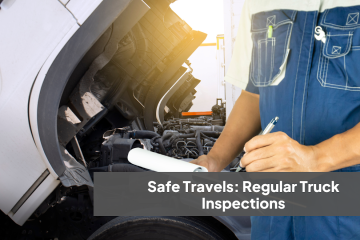An intercooler, also known as a charge air cooler (CAC), is an essential component of turbocharged and supercharged engines’ performance and efficiency. Cooling the air the turbocharger or supercharger compresses guarantees that the engine gets denser, colder air, which increases performance and economy. However, a failing charge air cooler can cause major problems, compromising engine performance and general vehicle functioning. Early recognition of the indicators of a malfunctioning charge air cooler helps to avoid expensive repairs and guarantees that your car stays in the best shape.
1. Increased Engine Temperature and Overheating
Overheating or an increase in engine temperature are two of the most obvious indicators that the charge air cooler is failing. Reducing the temperature of the compressed air before engine intake is the main use for the charge air cooler. Inappropriate operation of the charge air cooler might cause the air entering the engine to be excessively hot, therefore raising the engine temperatures. If not corrected, this overheating may shorten engine efficiency, hasten the wear on engine components, or even cause more serious damage. Early detection of these problems might come via dashboard engine temperature gauge monitoring. Particularly under regular driving circumstances, if you find the engine running hotter than usual, it could indicate a charge air cooler issue.
2. Poor Engine Performance and Reduced Power
A malfunctioning charge air cooler can significantly reduce engine performance and output. The engine might not receive the appropriately cooled air required for ideal combustion if the charge air cooler fails. This may result in a decrease in engine power, sluggish acceleration, and a general feeling of sluggishness. The vehicle may also struggle to reach its normal pace, especially under load or in highly demanding driving circumstances. It is imperative to have the charge air cooler inspected and possibly replaced if you observe a noticeable decrease in performance or a lack of responsiveness. Your vehicle’s power and driving dynamics can be restored if this problem is quickly resolved.
3. Visible Leaks or Fluid Puddles
The presence of obvious leaks or fluid puddles under the car is another indication that the charge air cooler is failing. Leaks in either internal or external components of charge air coolers may cause coolant or air loss. Depending on where the leak starts, these leaks might show up as puddles of fluid beneath the car, either coolant or oil. Leaks compromise not just the charge air cooler’s performance but, if not quickly fixed, might cause additional engine problems. Early identification of any issues depends on routinely looking for leaks around the charge air cooler and making sure the area is free of any fluid buildup.
4. Increased Exhaust Smoke or Odor
Increased exhaust smoke or strange exhaust system odors may also be signs of a failing charge air cooler. Inappropriate air-fuel mix ratios resulting from ineffective charge air cooler operation may lead to incomplete combustion. Excess smoke from the exhaust comes from this incomplete combustion. If the charge air cooler is leaking or malfunctioning, the engine could produce an unusual odor, usually characterized as burned oil or coolant. Determine whether the charge air cooler is the source of the problem if there is a discernible increase in exhaust smoke or any strange smells.
5. Warning Lights on the Dashboard
Many sensors in modern cars track engine performance and components, including the performance of charge air coolers for Audi. Warning dashboard lights, such as the check engine light or cooling system indicators, may appear if the charge air cooler fails. These warning signals are meant to let drivers know if important engine components could malfunction. Use an OBD-II scanner or see a professional technician to determine the problem when such warning lights turn on precisely. Ignoring these warning lights could cause greater damage and more costly repairs.
6. Unusual Noise from the Engine Bay
Another indication of a failed charge air cooler is unusual engine bay noise. Particularly in cases of a leak in the cooler or its related hoses, a damaged or malfunctioning charge air cooler may generate hissing or whistling noises. These sounds arise from the damaged component releasing pressurized air from the turbocharger or supercharger. Sometimes, the noise might be accompanied by obvious loss of power or other performance problems. It is advisable to examine the charge air cooler and its associated parts if you hear any strange noises coming from the engine compartment, particularly when the engine is accelerating or under load.
Conclusion
A failing charge air cooler can cause a variety of symptoms, including increased engine temperature, decreased performance, visible leaks, increased exhaust smoke, dashboard warning lights, and unusual engine noises. Early identification of these indicators and quick resolution of them can assist in saving further engine damage and preserve the best vehicle performance. Regular maintenance and inspections of the charge air cooler, particularly in vehicles with high-performance modifications or heavy use, can ensure that it continues to function properly, contributing to the engine’s overall health and efficiency.
Curious to learn more? Head over to Creative Released and explore fresh content!



